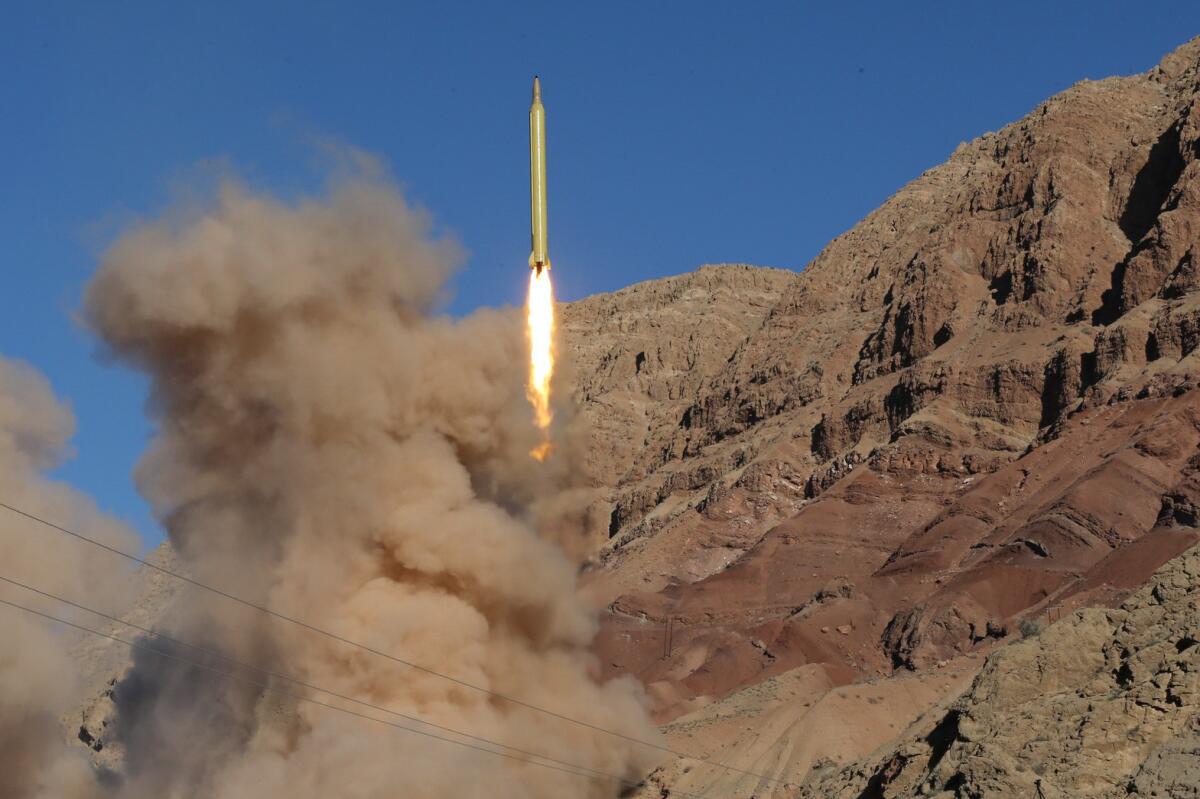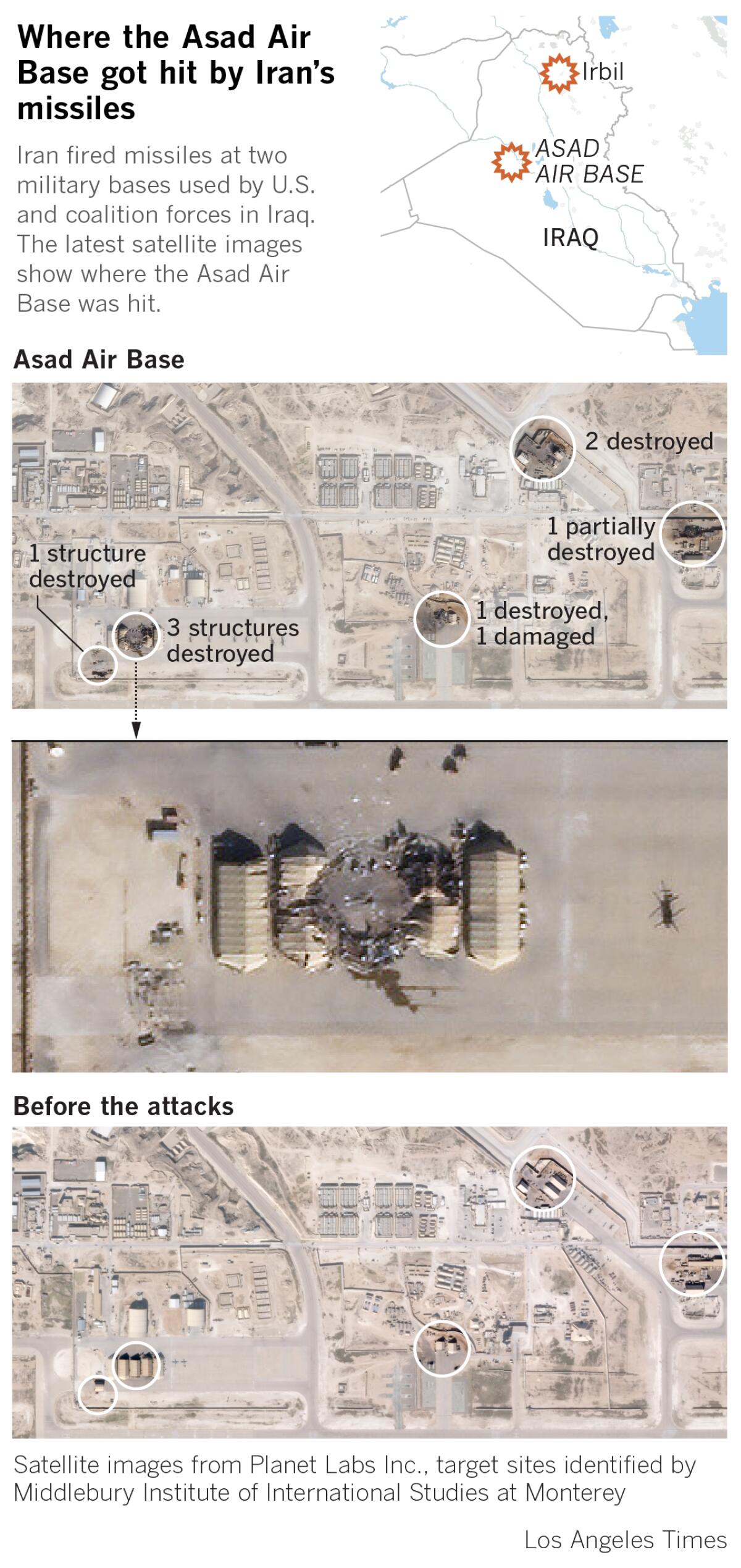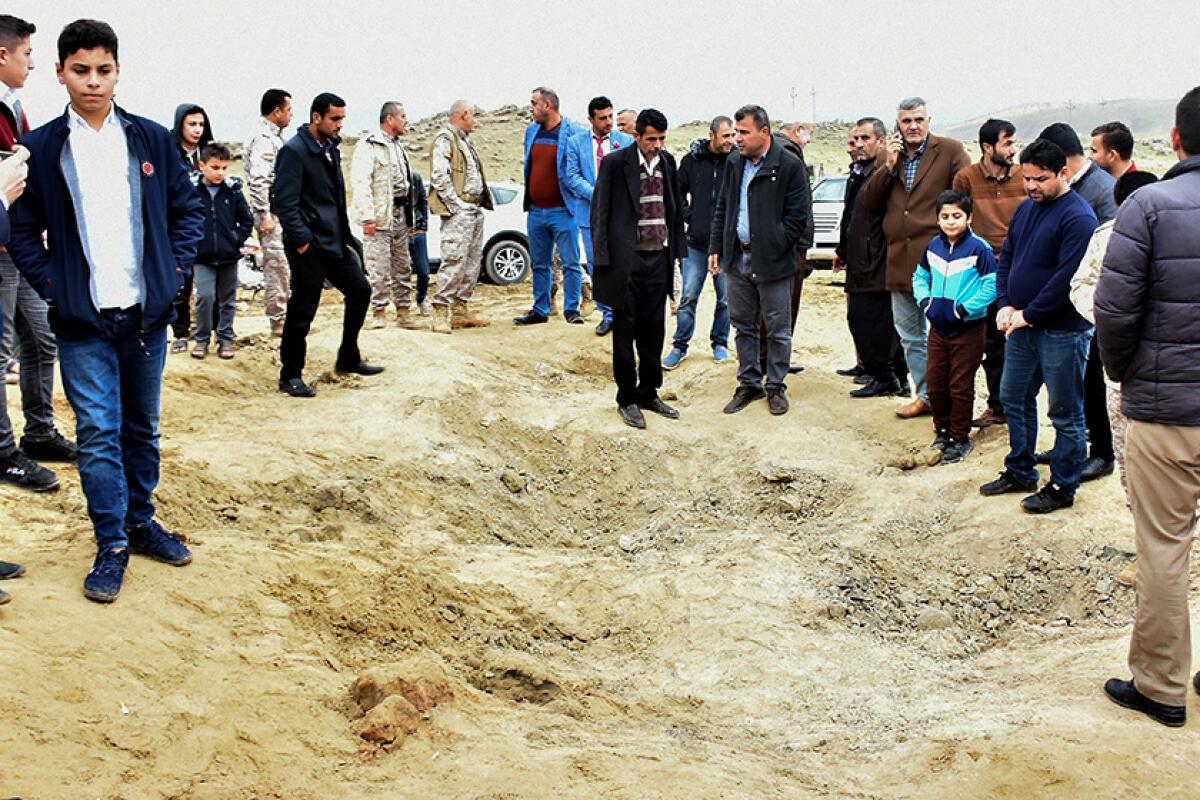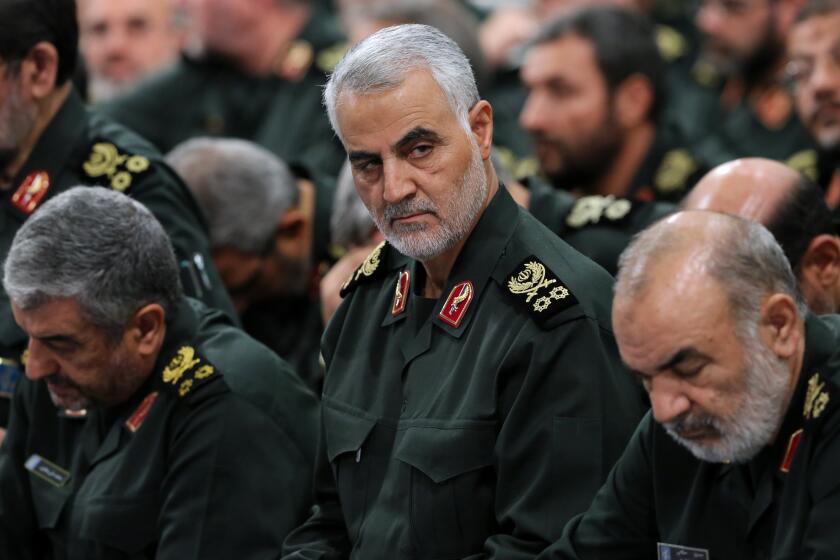Did Iran deliberately avoid U.S. casualties?

WASHINGTON — The commercial satellite images show the damage Iranian missiles left on the remote Iraqi air base — charred rubble where hangars or other facilities once stood and a gaping crater alongside a runway, while nearby buildings stood unscathed.
Less clear is what the high-resolution images reveal about Iran’s intent in targeting the Asad Air Base, which houses U.S. troops, or the precise capabilities of Tehran’s vast missile arsenal.
Tehran may have carried out a limited strike that specifically targeted hangars, not barracks or other buildings more likely to contain U.S. or coalition troops in the predawn hours Wednesday. No casualties were reported after the attack.
“If they were going for a body count, they went the wrong way about it,” said David Joseph Schmerler, a senior research associate at the Middlebury Institute of International Studies at Monterey.
Pentagon officials conceded that the damage was not extensive — “nothing that I would describe as major,” Defense Secretary Mark Esper told reporters at the Pentagon — but suggested that was a lucky accident, not Iran’s intent.
The missile salvo was “intended to cause structural damage, destroy vehicles and equipment and aircraft and to kill personnel,” said Army Gen. Mark Milley, the chairman of the Joint Chiefs.
Iran’s missile attack on two bases housing U.S. forces in Iraq marked a departure as well as a strategic and calculated move. Here’s what it means.
The fact that no one was killed “has more to do with defense techniques that forces used, as opposed to intent,” Milley added.
The Pentagon claimed credit for the lack of casualties, saying U.S. officials had determined hours earlier that an attack was imminent, and personnel at both bases were ordered to take cover in reinforced bunkers before the missiles, which were tracked by radar, landed.
Pentagon officials said military operations would quickly resume at Asad and at the second base targeted, in Irbil in northern Iraq.
Iran’s short-range ballistic missiles fly a low trajectory but still go to the edge of the atmosphere or briefly into space before falling toward their targets. The launches can be spotted by satellite and tracked by radar, giving troops a limited time to seek shelter.
Iran’s leaders claimed a major victory, and state-run TV broadcast endless video of fiery objects arcing through the night sky as just retaliation for the U.S. drone strike that targeted and killed Gen. Qassem Suleimani, Iran’s most powerful military commander, near Baghdad on Friday.
But there were also signs that the reprisal attack was meant to send a message more than to inflict punishment that could potentially spark a wider conflict.
“Last night, we slapped the U.S. in the face,” Iran’s supreme leader, Ayatollah Ali Khamenei, said in a televised speech from Tehran.

Iran’s thousands of missiles are both a source of national prestige — they’re often the centerpiece of state propaganda or military parades — as well as a valuable weapon. They give Tehran, whose conventional military strength is limited, the ability to strike widely in the Middle East.
Some analysts argued that Iran used the attacks to showcase significantly improved targeting capabilities on its missiles as a warning to the West that it could do far greater damage if a more serious conflict erupts.
The attack shows that Iran has worked “extensively on precision guidance,” said Thomas Karako, a missile expert at the Center for Strategic and International Studies, a Washington think tank. “These aren’t just dumb Scuds that will hit somewhere within a half-mile radius at best,” referring to the Soviet-designed tactical ballistic missile exported widely around the world during the Cold War.
Iran “had to have confidence that they would hit their intended targets and not cause U.S. casualties,” he said. “They wanted to do just enough to remind the U.S. that they had this capability.”
Other analysts were more cautious, saying it’s not yet certain if Iran had achieved new advances in missile targeting.
Michael Elleman, a missile expert at the International Institute for Strategic Studies, a Washington-based think tank, said it appeared that the Iranians hit Asad Air Base with the Fateh 313, a solid fuel missile with a range of more than 200 miles.
Iran unveiled the Fateh 313 in 2015, reportedly after equipping it with a satellite guidance system. Along with wings on the rocket body that adjust in flight, that improvement could enable the missile to change course as it dives toward its target, improving its accuracy.
Whatever the long-term impact on U.S.-Iran relations, Trump can perhaps claim political victory after ordering the killing of Iranian Gen. Qassem Suleimani, an act that underscored his penchant for risky moves.
Even so, Elleman estimates, the Fateh 313 is accurate to within about 328 feet of its target, making precise strikes on a specific building or hangar less than certain.
“These systems are reasonably accurate but I think they got a little bit lucky in hitting buildings,” Elleman said.
He said Iran may have launched some the missiles from Bakhtaran missile base in Iran’s Kermanshah province, which is just across the Iranian border and is almost due east of Asad.
Iran used the facility to launch missiles at Islamic State targets in Syria in late 2018, he said.
“The Iranians are very proud of being able to target specific buildings,” Fabian Hinz, an expert on the Iranian arsenal also at the Middlebury Institute. “They would have satellite pictures, they would have targeting information.”

The Pentagon said Iran also launched up to five Qiam missiles at a joint U.S.-Iraqi base in Irbil, but the Qiam is less accurate than the Fateh 313.
Only one of the Qiam missiles hit the base, while four failed during flight. The Qiam is a two-stage descendant of the Scud that, unlike the Fateh, cannot maneuver in flight and is accurate to within only 2600 feet of its intended target.
Iran has used the Qiam against Islamic State militants in Syria and Kurdish groups in Iraq, according to Hinz.
Iran has worked for decades to develop and build thousands of short- to medium-range ballistic missiles, drawing on design help and components from North Korea, Russia and Ukraine at various times. In recent years, facing stiff U.S. and United Nations sanctions, Tehran has relied more on its own capabilities.
Iran’s use of ballistic missiles differs from an attack in September, involving drone aircraft and cruise missiles that temporarily disabled a major Saudi oil refinery. U.S. officials blamed Iran but Tehran denied responsibility.
Iran’s military had more ballistic missiles than any other country in the region, according to a March 2019 report from the nonpartisan Brookings Institution, and most of the launchers are mobile, giving Iran greater capability to hide its missiles and avoid counterattacks.
“Tehran relies on its missile programs as an integral part of its military strategy and conventional warfighting capability,” the report said. “It has therefore devoted substantial time, energy, and resources to amass and exercise a militarily significant and credible missile force.”
More to Read
Sign up for Essential California
The most important California stories and recommendations in your inbox every morning.
You may occasionally receive promotional content from the Los Angeles Times.














